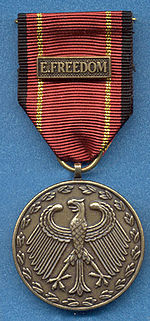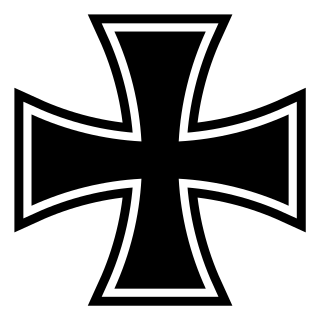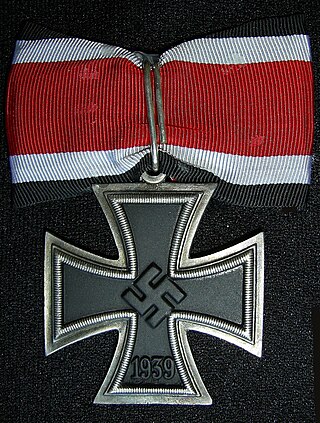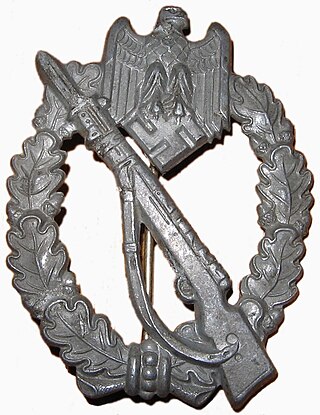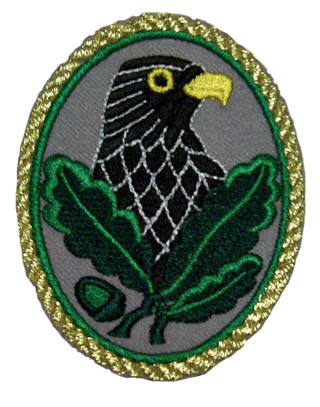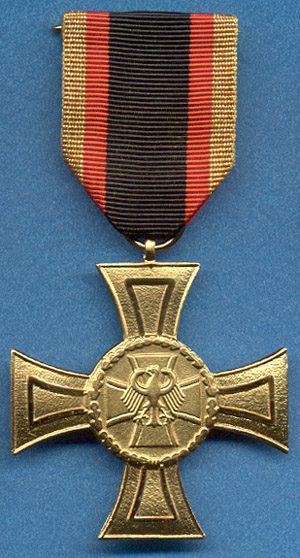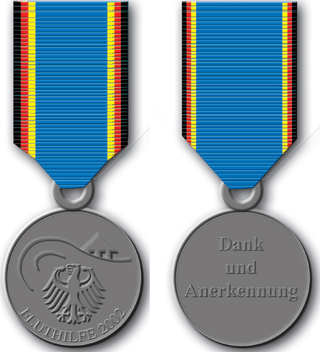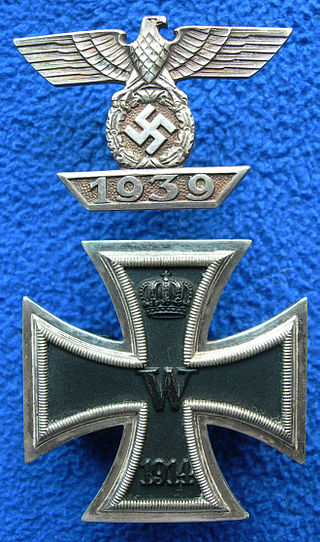| Ribbon bar | Operation | Dates |
|---|
 | Humanitarian assistance for 2004 Indian Ocean earthquake in Aceh, Indonesia | 3 January – 18 March 2005 |
 | Operation Active Endeavour, monitoring and maritime surveillance in the fight against terrorism. | 26 October 2001 – present |
 | Operation Active Fence, a NATO mission to guard the border of member state Turkey from attacks related to the Syrian Civil War. | 4 December 2012 – present |
 | African-led International Support Mission to Mali (AFISMA), military mission to support the government of Mali against Islamist rebels in the Northern Mali conflict. | 20 December 2012 – 25 April 2013 |
 | AFOR (Albania Force), a NATO humanitarian assistance mission in Albania for refugees of Kosovo. | 13 April – 8 August 1999 |
 | Operation Allied Force, NATO air operations against the Federal Republic of Yugoslavia. | 24 March – 10 June 1999 |
 | NATO Operation Allied Harmony, a continuation of Operation Fox, a peacekeeping-mission in the Republic of Macedonia. | 15 December 2002 – 31 March 2003 |
 | Operation Allied Harvest, ammunition salvage operations in emergency jettison areas of the Adriatic Sea. | 12 June – 24 August 1999 |
 | Operation Atalanta, anti-piracy operations off the coast of Somalia. | 19 December 2008 – present |
 | Operation Eagle Assist, NATO air defense operations following the September 11 attacks. | 12 October 2001 – 16 May 2002 |
 | Operation Enduring Freedom, fight against international terrorism. | 16 November 2001 – 28 June 2010 |
 | Service in Operation Allied Harmony after the transition of the mission to European Union (EU) command. | 31 March – 12 December 2003 |
 | EUCAP NESTOR, an EU-led mission to build the capacities of countries in the Horn of Africa and the western Indian Ocean in the field of maritime security. | 16 July 2012 – present |
 | EUFOR multi-national peacekeeping force in Bosnia-Herzegovina. | 2 December 2004 – 27 September 2012 |
 | EUFOR RCA, a United Nations-mandated European Union peacekeeping mission in Bangui, Central African Republic. | 1 April 2014 – present |
 | EUFOR RD Congo, an EU deployment in support of the United Nations Mission in the Democratic Republic of Congo (MONUC) during the period encompassing the general elections in the DR Congo. | 12 June – 23 December 2006 |
 | EUTM Mali, a European Union multi-national military training mission headquartered in Bamako, Mali to train and advise the military of Mali. | 17 January 2013 – present |
 | EUTM Somalia, a training mission of the EU for the Somali Armed Forces. | 15 February 2010 – present |
 | NATO mission to protect international observers from the Organization for Security and Co-operation in Europe (OSCE) and the EU in Macedonia. | 27 September 2001 – 15 December 2002 |
 | Implementation Force (IFOR), a NATO multi-national peace enforcement force in Bosnia-Herzegovina under the Operation Joint Endeavour, or as part of the earlier Rapid Reaction Force as part of UNPROFOR. | 8 August 1995 – 20 December 1996 |
 | International Force for East Timor (INTERFET), service with multi-national forces in East-Timor. | 17 November 1999 – 23 February 2000 |
 | International Security Assistance Force (ISAF) in Afghanistan. | 22 December 2001 – present |
 | Kosovo Force (KFOR), a NATO peacekeeping force responsible for establishing security in Kosovo. | 12 June 1999 – present |
 | Kosovo Verification Mission (KVM) was an OSCE mission to verify that Serb forces were complying with the October Agreement to end atrocities in Kosovo | 4 December 1998 – 8 June 1999 |
 | United Nations Mission for the Referendum in Western Sahara (MINURSO) a United Nations peacekeeping mission in Western Sahara, established under United Nations Security Council Resolution 690. | 29 April 1991 – present |
 | United Nations Multidimensional Integrated Stabilization Mission in Mali (MINUSMA) a United Nations peacekeeping mission in Mali. | 25 April 2013 – present |
 | OSCE observer mission in Georgia. | 28 August 2008 – 30 June 2009 |
 | Stabilization Force (SFOR), a NATO-led multinational peacekeeping force deployed to Bosnia-Herzegovina after the Bosnian War. | 20 December 1996 – 2 December 2004 |
 | Operation Sharp Guard, surveillance and enforcement of a naval blockade in the Adriatic Sea against Yugoslavia. | 30 June 1995 – 19 June 1996 |
 | Operation Swift Relief, humanitarian assistance in Pakistan after the 2005 Kashmir earthquake. | 10 October 2005 – 15 April 2006 |
 | United Nations Assistance Mission in Afghanistan (UNAMA), a UN political mission established to assist the Government and people of Afghanistan in laying the foundations for sustainable peace and development. | 10 May 2004 – present |
 | African Union – United Nations Hybrid Operation in Darfur (UNAMID), a joint African Union and United Nations peacekeeping mission in Darfur, Sudan. | 15 November 2007 – present |
 | United Nations High Commission for Refugees (UNHCR) Sarajevo airlift. | 30 June 1995 – 9 January 1996 |
 | United Nations Interim Force in Lebanon (UNIFIL), a UN peacekeeping mission to confirm Israeli withdrawal from Lebanon, restore international peace and security, and help the Government of Lebanon restore its effective authority in the area. | 20 September 2006 – present |
 | United Nations Mine Action Center (UNMAC) as part of the United Nations Observer Mission in Bosnia and Herzegovina. | October 1997 – 30 June 1999 |
 | United Nations Mission in Ethiopia and Eritrea (UNMEE), a UN peacekeeping mission to monitor a ceasefire in the Eritrean–Ethiopian War that began in 1998 between Ethiopia and Eritrea. | 2 February 2004 – 31 July 2008 |
 | United Nations Interim Administration Mission in Kosovo (UNMIK), a UN mission to support the independence of Kosovo. | 6 December 1999 – 21 December 2001 |
 | United Nations Mission in Sudan (UNMIS), a UN mission to support the Comprehensive Peace Agreement between the government of the Sudan and the Sudan People's Liberation Movement. | 22 April 2005 – 11 June 2011 |
 | United Nations Mission in the Republic of South Sudan (UNMISS), a UN mission to support the Government of South Sudan. | 8 July 2011 – present |
 | United Nations Observer Mission in Georgia (UNOMIG), a UN observer mission to verify a ceasefire agreement between Georgia and forces in Abkhazia. | 30 June 1995 – 15 June 2009 |
 | United Nations Protection Force (UNPF), a UN peacekeeping force in Croatia and in Bosnia-Herzegovina during the Yugoslav wars. | August 1995 – 20 December 1995 |
 | United Nations Special Commission (UNSCOM) in Iraq to ensure compliance to limit Iraqi production and use of weapons of mass destruction after the Gulf War. | June 1991 – September 1996 |
 | Joint mission of the UN and the Organisation for the Prohibition of Chemical Weapons on the maritime escort operations in the hydrolysis of Syrian chemical weapons aboard MV Cape Ray. | 27 September 2013 – present |
 | Western European Union (WEU) mission in the Adriatic Sea | 10 May 1999 – 10 April 2001 |
